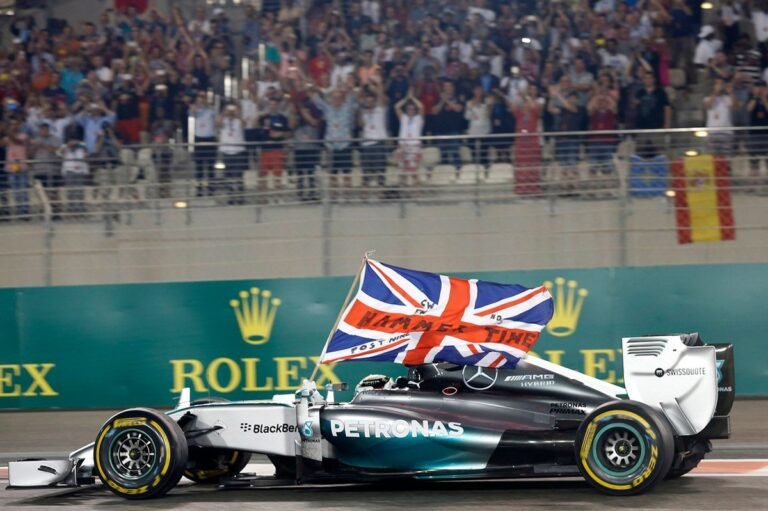Understanding the 2026 Engine Regulations in Formula 1
The world of Formula 1 is constantly evolving, and recently, a significant meeting took place in Geneva, where the FIA, Formula 1, and team representatives gathered to discuss the upcoming 2026 engine regulations. This discussion did not solely focus on the technical specifications; it also aimed at fostering competition among manufacturers and ensuring safety on the track. A primary concern is preventing situations reminiscent of the 2014 season, where Mercedes dominated the grid, leaving other teams, like Honda, struggling to catch up for years. The team’s primary objective was to establish mechanisms that would support trailing manufacturers in their efforts to bridge performance gaps while recognizing the financial constraints imposed by the budget cap.
Bridging the Gap for Trailing Manufacturers
As the teams explored the specifics of the 2026 regulations, the topic of how to assist those manufacturers who may fall behind emerged prominently. With the introduction of a budget cap, the struggle to catch up could become even more difficult for some. To address this, the meeting suggested implementing "catch-up mechanisms." One potential solution discussed included allowing manufacturers who lag in performance to utilize additional dyno hours and access extra funds under the engine budget cap. Importantly, performance measures would focus on the power unit itself, excluding team performance, to ensure a fair comparison.
The intent behind these proposals is to maintain competitive balance within the sport. The last thing the FIA wants is for one manufacturer to race ahead, leaving the others in a lengthy and potentially damaging recovery phase. By establishing these new mechanisms, the governing body hopes to create a more equitable playing field, one where continuous innovation and competitiveness are encouraged.
Navigating Electric Components and Energy Management
Aside from addressing performance disparities, the F1 Commission delved into the electric components of the upcoming power units. There’s significant debate, particularly among team leaders, regarding how to manage energy effectively, especially as cars may face challenges during races when batteries deplete. On the one hand, Toto Wolff from Mercedes dismissed the proposal to reduce the electric component as a “joke,” indicating potential resistance to significant changes. In contrast, Christian Horner of Red Bull supported the idea, suggesting the possibility of modifying energy deployment rates on circuits known for their long straights, such as Monza.
Striking a balance between performance and reliability is crucial. While there’s a focus on improvement and speed, the natural limitations of electric power must also be acknowledged. Any adjustments will have to undergo substantial discussion among teams to identify a compromise that aligns with their individual strategies while promoting fair competition. The power unit advisory committee will further explore these proposed changes in greater depth as the season progresses.
Safety First: Tackling Grass Fire Incidents
In addition to the discussions surrounding power units, the meeting took time to address safety concerns that arose during the last Japanese Grand Prix weekend, where a series of grass fires disrupted practice and qualifying sessions. The FIA expressed its commitment to not only understanding the roots of these incidents but also to finding concrete solutions to reduce the risk of fire in the future. The proposal included investigating alternative skid materials, such as switching from titanium to steel, which could minimize risks on tracks with grass run-offs.
While changing the skid material could positively impact safety, it raises questions about the overall weight of the cars and the wear rates of the skid plates. Of course, these technical changes must be balanced against existing performance regulations. This aspect of the meeting highlights F1’s ongoing commitment to safety, ensuring that as the sport advances technologically, it does not compromise the well-being of drivers, teams, or fans.
Continuous Improvements and Strategic Changes
Moreover, the meeting in Geneva discussed other housekeeping issues that are critical as the season progresses and new entrants prepare for the 2026 season. For instance, amendments to implement mandatory two-stop strategies during the Monaco Grand Prix were on the agenda, aiming to enhance race dynamics and excitement for fans. There’s also consideration of adjusting the capital expenditure allowance for new entrants like Cadillac, set to join in the upcoming season. Such adjustments are imperative to ensure that newcomers have a fair opportunity to compete against established teams.
These decisions exemplify Formula 1’s continual effort to remain at the forefront of racing technology and fan engagement while ensuring a competitive environment for all participants. By implementing these strategic changes, the FIA and teams aim to enrich the overall experience of the sport and foster an atmosphere of innovation and collaboration.
Looking Ahead: The Future of Formula 1
As preparations for the 2026 season progress, the discussions held in Geneva reflect a collective desire for Formula 1 to evolve while avoiding the pitfalls of the past. Striking the right balance between competitiveness, innovation, and safety is essential in this fast-paced sport. The proposed catch-up mechanisms and approaches to electric components and safety measures signify a proactive approach to ensuring that all manufacturers can compete on equal footing.
With the imminent introduction of new regulations, the future of Formula 1 looks bright, provided that the governing bodies and teams continue to work collaboratively. The groundwork laid in these discussions will be crucial as teams navigate the challenges and opportunities that await in the coming seasons. If all goes according to plan, fans can look forward to more engaging races and thrilling competition, characterized by a diverse array of competitive teams all striving for victory.



